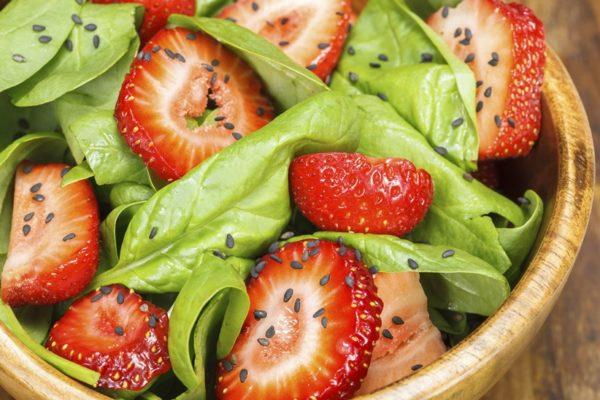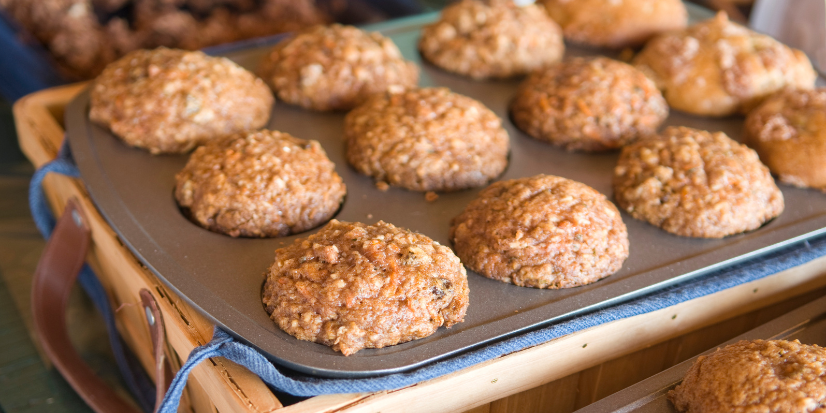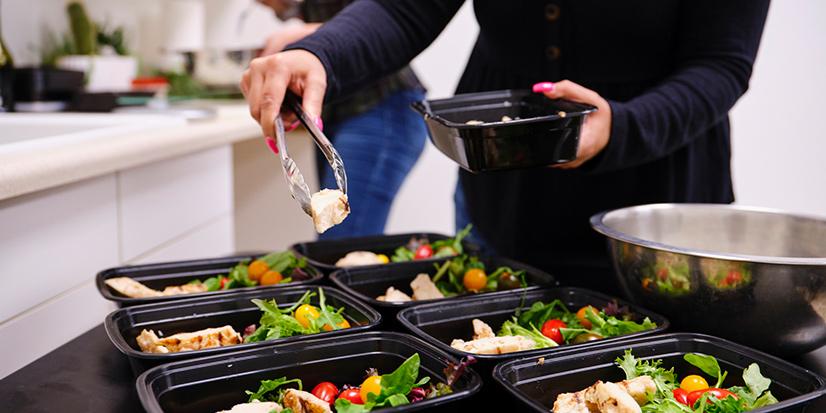Did you know the colors of a nation’s flag most often represent the values of that country? Take the American flag for example red stands for hardiness and valor, white signifies purity and innocence, while blue denotes vigilance, perseverance, and justice. You see, colors are more than just colors. Similarly, when it comes to nutrition, different colored foods play different roles in the body. Each color offers a unique health benefit, which is why you may have heard that it’s recommended by dietitians to “eat a rainbow” often. The reason for this recommendation is that plant-based foods are packed with phytochemicals, or naturally occurring chemical substances known to have disease-preventing properties. These phytochemicals are team players, working in conjunction with vitamins and minerals to improve health and reduce the risk of disease. So, the more colors in your diet, the more disease-fighting phytochemicals you are consuming!
The American Way
Many Americans are attracted to quick, low-cost foods, resulting in high salt, high fat, sugar-filled “beige diet” that is seriously lacking critical nutrients like fiber, vitamins, and minerals. It may not surprise you that 87 percent of Americans do not meet recommendations for fruit consumption (1.5-2 cups per day), and 91 percent do not meet recommendations for vegetable consumption (2-3 cups per day). Though certain beige foods are considered healthy and nutrient-dense (nuts, seeds, poultry, whole grains, etc.), the American diet includes an unnecessarily large amount of highly processed convenience foods such as crackers, bars, cookies, cereal, pastries, fried foods, frozen meals, fast food, etc. So, in the spirit of Independence Day, I challenge you to try out some of these red, white, and blue fruits and vegetables that can help brighten up your diet, and show your American pride.

Go Red for Heart Health
It is only appropriate that red foods support heart and circulatory health. They also help reduce the risk of certain cancers. Foods such as cherries, cranberries, red bell peppers, beets, and tomatoes are packed with several phytochemicals, with lycopene being the major pigment in red fruits and veggies. Lycopene is a powerful antioxidant mainly found in (cooked) tomatoes and has shown to help reduce the risk of cancer and cardiovascular disease.
Not a tomato fan? No problem! Additional lycopene-containing foods include guavas, watermelon, papaya, grapefruit, red bell peppers, and red cabbage. Other nutritious red foods include:
- Strawberries
- Raspberries
- Pomegranate
- Red kidney beans
- Red apples
- Red grapes
- Red pears
- Radishes
- Radicchio
- Red onions
- Red potatoes
- Rhubarb
Don’t stop when you see red, GO for it!
Fight With White
Though white may not be considered an actual color, you definitely don’t want to exclude white plant foods from your diet. This is because the largest group of phytochemicals, flavonoids, are generally colorless! Flavonoids are powerful antioxidants that help the body fight back. They enhance the immune system, lymph systems, and assist in cellular repair from free radical damage. Garlic has strong anti-microbial properties and has been linked to heart health and decreased cancer risk. Similarly, onions are also packed with anti-microbial agents. Onions have also been shown to help decrease blood glucose and improve heart health by reducing cholesterol and blood pressure. But, if you’re an onion hater, we’ve still got you covered. Other delicious white foods include:
- White pears
- Cauliflower
- Bananas
- Mushrooms
- Potatoes
- Ginger
- White corn
- Turnips
- Shallots
- Parsnips
- Kohlrabi
- Apples
Remember, when it comes to plant foods, white is a bright choice!
The Bluer the Better
Blue (and purple) plant foods get their distinct color from anthocyanins, important members of the flavonoid group of phytochemicals, with a darker blue pigment meaning a larger phytochemical concentration. You could say that anthocyanins are VIP members of the flavonoid club, having extraordinary free-radical hunting capabilities and antioxidant capacities. Blue and purple foods also have anti-aging properties, help promote bone health, improve memory, enhance night and overall vision, and have been shown to reduce the spread of cancer cells and inhibit tumor formation. The key benefit of blue and purple foods is greater circulation and microcirculation of blood throughout the body, which is especially important for those at risk for stroke and heart disease. Blueberries are usually the go-to when we think of antioxidant-rich foods, but let’s not forget about the other players on the blue team. Blackberries, plums, and eggplant are also packed with health-promoting fiber, vitamins, minerals, fiber, and antioxidants. Or, try one of these tasty blue/purple foods:
- Purple cabbage
- Purple grapes
- Prunes
- Purple carrots
- Black currants
- Raisins
- Dried plums
- Elderberries
- Purple figs
- Purple asparagus
- Black salsify
- Purple-fleshed potatoes
- Purple Belgian endive
Putting It All Together
If all of this seems overwhelming, just remember the number three. Three is the minimum amount of colors you should target on each plate. Since most protein sources and whole grains are beige, your rainbow should come from a variety of fresh or frozen fruits and vegetables.
Feeling adventurous but not sure how to utilize a certain fruit or vegetable? Visit allrecipes.com and type the ingredient in the search box. Or, try these red, white, and blue recipes for your Fourth of July celebration:
- Personal Pan Cauliflower Crust Pizza
- Healthy Blueberry Jam







